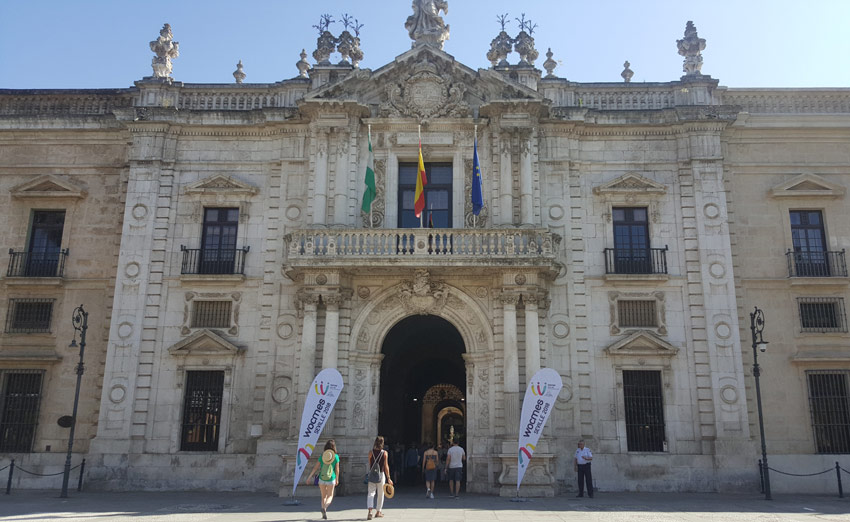 Le lien énergie, eau et sécurité alimentaire du projet Sahara Wind présenté au Congrès Mondial des Etudes sur le Moyen-Orient à Séville, en Espagne
Le lien énergie, eau et sécurité alimentaire du projet Sahara Wind présenté au Congrès Mondial des Etudes sur le Moyen-Orient à Séville, en Espagne
Afin de sécuriser un accès à l'eau, le fondateur du projet Sahara Wind a installé la première éolienne d’Afrique du nord sur le littoral atlantique du Sahara en 1995. Essais sur le terrain, rapports et consultations régionales ont inspiré des décennies de politiques éoliennes. Celles-ci ont permis la mise en place de stratégies durables d’accès à l'eau. Stimulant agriculture et développement local, la ligne HVDC du projet Sahara Wind facilitera la transformation dé-carbonée de phosphates en fertilisants. En traitant 71% des réserves mondiales de Phosphates détenues par le Maroc, une source majeure d'émissions de gaz à effet de serre est atténuée. Co-généré par les énergies renouvelables dans la production d’acide phosphorique, l'hydrogène servant à la production d’ammoniac est également dé-carboné. Ces perspectives ont été présentées le 19 juillet au Panel Eau et Ressources du #WOCMES2018.
July 19th, 2018 2:30 pm - 4:30 pm Room: 105
To secure access to water, a wind turbine was installed on the Sahara Atlantic coastline in 1995. A solution was needed to substitute fossil water aquifers tapped from old oil-exploration wells in agricultural applications. On-site wind measurements confirmed the Atlantic trade wind’s exceptional quality, which could be used for seawater desalination. This was reported to Morocco’s head of state in 1994. Local field trials and regional consultations enabled the Sahara Wind project to be made public in 2002. By powering Africa & Europe at record-low electricity prices, the project’s 5GW-HVDC transmission line boosts local development through regional integration. This inspired Morocco’s wind policies. From 2003, a multi-stakeholder cooperation through the Sahara Wind project with Morocco’s utilities enabled multilateral institutions to fund the world’s most competitive wind tender (as of 2017), support a power & water utility merger and build the largest renewable desalination plant by Agadir. Powered by trade winds blowing over the Sahara desert, the plant under construction is to supply a major urban center and sustain water needs of Morocco’s largest agricultural region. It will also be used to recharge its depleted water aquifers exposed to sea water intrusions. Conducive renewable legislative frameworks (law13-09) enabled wind farms to power industries as well. Coordinated under the Sahara Wind project, a preliminary regional industry-academia applied research program on wind energy access was carried-out in Morocco & Mauritania with funding from NATO’s Science for Peace frameworks. In addition to Africa’s 1st wind-hydrogen system unveiled at Al Akhawayn University in 2011 and the 2nd delivered at the University of Nouakchott, a regional wind monitoring network was established with telecom operators of both countries. Overmatching Morocco’s 52% renewable electricity targets in 2030 by a large extent, the Sahara Wind project established a critical link between the Atlantic trade winds and 71% of the world’s known phosphates deposits as their fossil footprints. As 90% of Phosphates are used as fertilizers, wind powered electro-chemical processes can substitute fossil fuels in phosphate upgrades and ammonia synthesis. The latter consume 3% of the world’s primary energy demand. Scalable, direct wind-hydrogen reduction plants can also process Mauritania’s iron-ore into CO2-free value-added steels exports. Being the world’s largest CO2 emitters, fertilizer and steel industries can transition into carbon-free processes. Backed by significant reserves, the aforementioned business cases not only enhance local access to wind-electricity, but will also empower state-owned mining conglomerates in becoming stakeholders of their energy transition.



